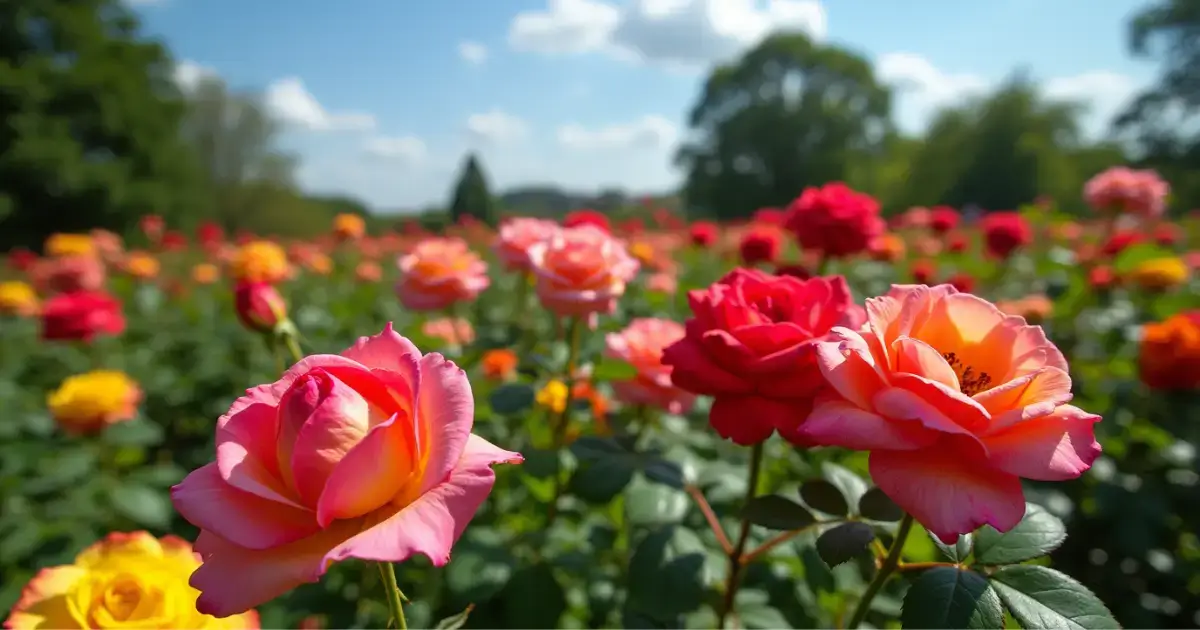9 Best Tips to Create A Rose Garden In Different Types Of Spaces
Table of Contents
Introduction
Roses are a timeless symbol of beauty and elegance, adored by gardeners and nature enthusiasts alike. But what if you don’t have a sprawling yard or dedicated garden space? The good news is that roses are incredibly versatile, making it possible to cultivate a thriving rose garden in various types of spaces, whether it’s a small yard, balcony, or even vertical structures like walls or trellises. With the right techniques, anyone can experience the joy of growing roses, no matter the size or layout of their gardening area.
1. Why Grow Roses ?
Roses aren’t just ornamental flowers; they provide numerous benefits to your outdoor or indoor environment. Aside from their mesmerizing fragrance and stunning colors, roses attract pollinators such as bees and butterflies, supporting a healthy ecosystem. Additionally, many rose varieties are hardy and low-maintenance, making them a great choice for gardeners of all experience levels. From enhancing curb appeal to creating a peaceful retreat, roses have something to offer everyone.
2. Preparing the Space :
Before planting, proper preparation is key to ensuring that roses grow healthily, regardless of the space you’re working with. Follow these steps to create an optimal growing environment :
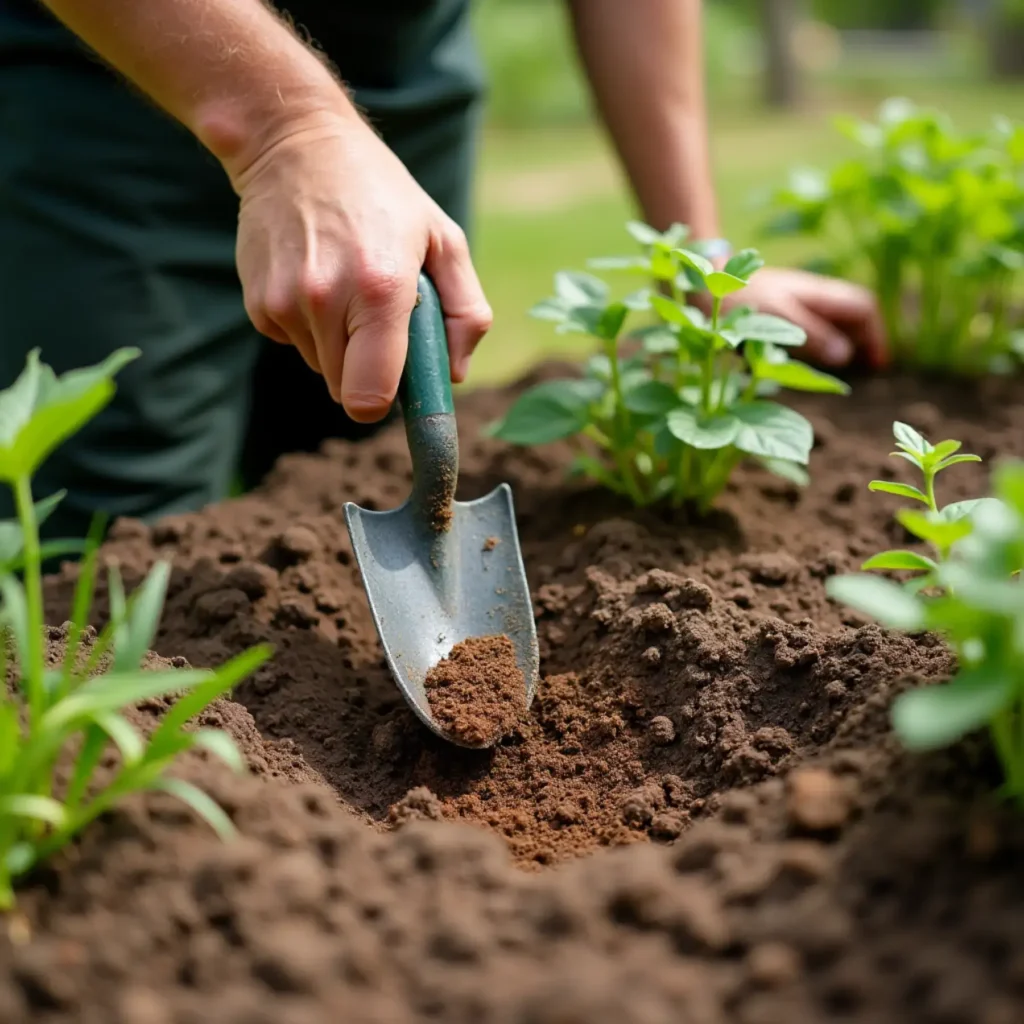
- Sunlight : Ensure your chosen area receives at least 6–8 hours of direct sunlight daily. Roses love the sun!
- Soil : Use well-draining soil enriched with organic matter like compost or well-rotted manure. Aim for a slightly acidic pH of 6.0–6.5.
- Drainage : If planting in containers, ensure pots have drainage holes to prevent waterlogging. For garden beds, loosen the soil to allow water and roots to move freely.
- Space Considerations : Whether you’re planting in-ground or in pots, leave enough room between plants for good air circulation.
3. Selecting the Right Rose Varieties
When designing a rose garden, choosing the right variety is essential to ensure that your plants thrive in your specific space.
- For Small Spaces : Dwarf roses and patio roses, such as Petite Knock Out, are compact yet prolific bloomers, making them ideal for smaller areas.
- For Containers : Miniature roses like Sweet Fairy and groundcover roses like Flower Carpet are perfect for potted arrangements.
- For Vertical Gardens : Climbing roses like Cecile Brunner and New Dawn add vertical interest to walls and trellises.
- For Large Gardens : Hybrid tea roses and shrub roses offer stunning displays of color and fragrance, ideal for expansive landscapes.
4. How to Create a Rose Garden in a Small Yard :
Don’t let a small yard limit your gardening ambitions. You can create a stunning rose garden even in compact spaces by focusing on design and efficient use of available room.
- Use Corners : Plant roses along the edges or corners of your yard to maximize open space.
- Companion Planting : Pair roses with low-growing companion plants like lavender or alyssum, which complement their blooms and keep pests away.
- Raised Beds : If space permits, build raised beds for better soil control and accessibility.
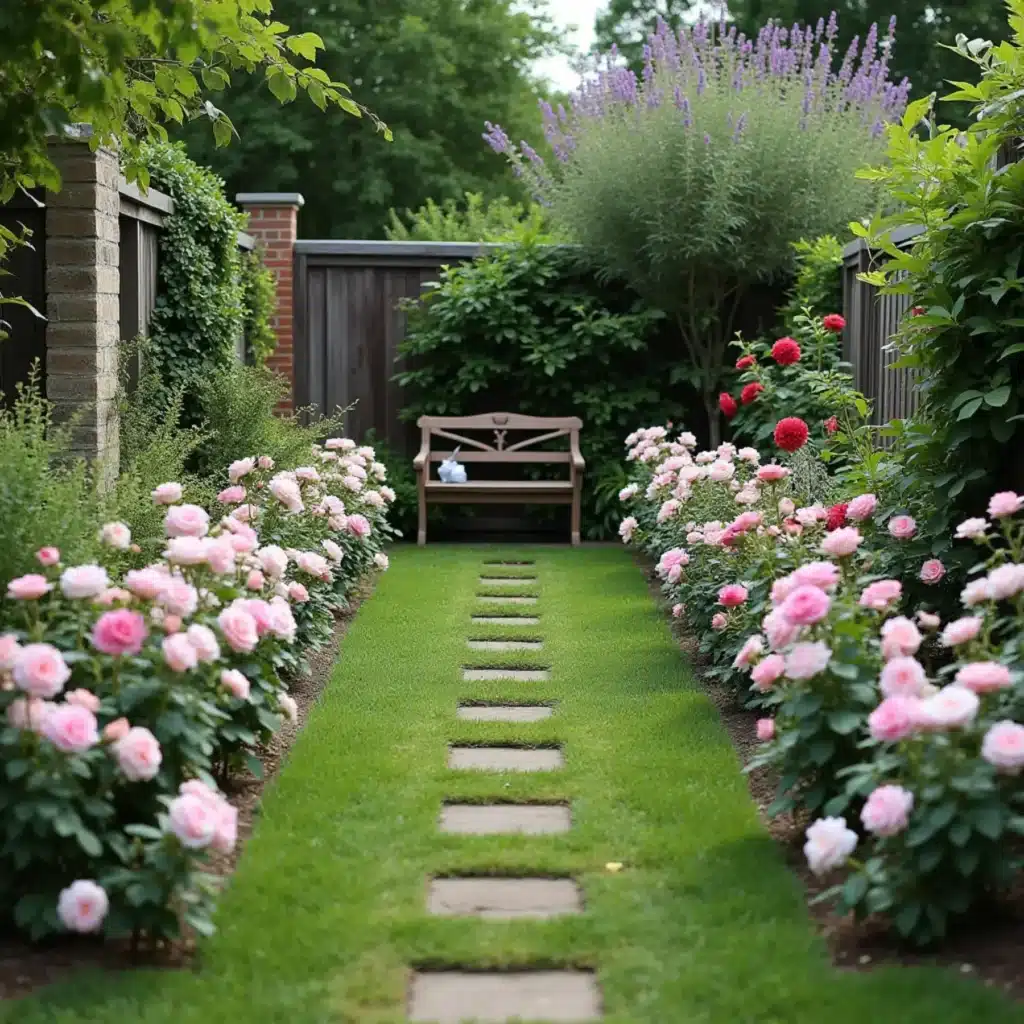
5. Container Gardening with Roses
If you don’t have soil to plant directly, container gardening is a flexible and stylish way to grow roses.
- Choosing Containers : Opt for large pots (at least 18 inches in diameter) to accommodate rose roots. Materials like terracotta and plastic are lightweight and durable.
- Potting Mix : Fill containers with a mix of potting soil, compost, and perlite to retain moisture while allowing drainage.
- Watering : Potted roses dry out faster, so water them deeply 2–3 times per week, depending on your climate.
- Mobility : Use pots with wheels to move your roses easily to sunnier spots as needed.
6. Vertical Gardening : Roses on Trellises and Walls :
If ground space is limited, climbing roses are an excellent choice for adding height and visual drama to your garden.
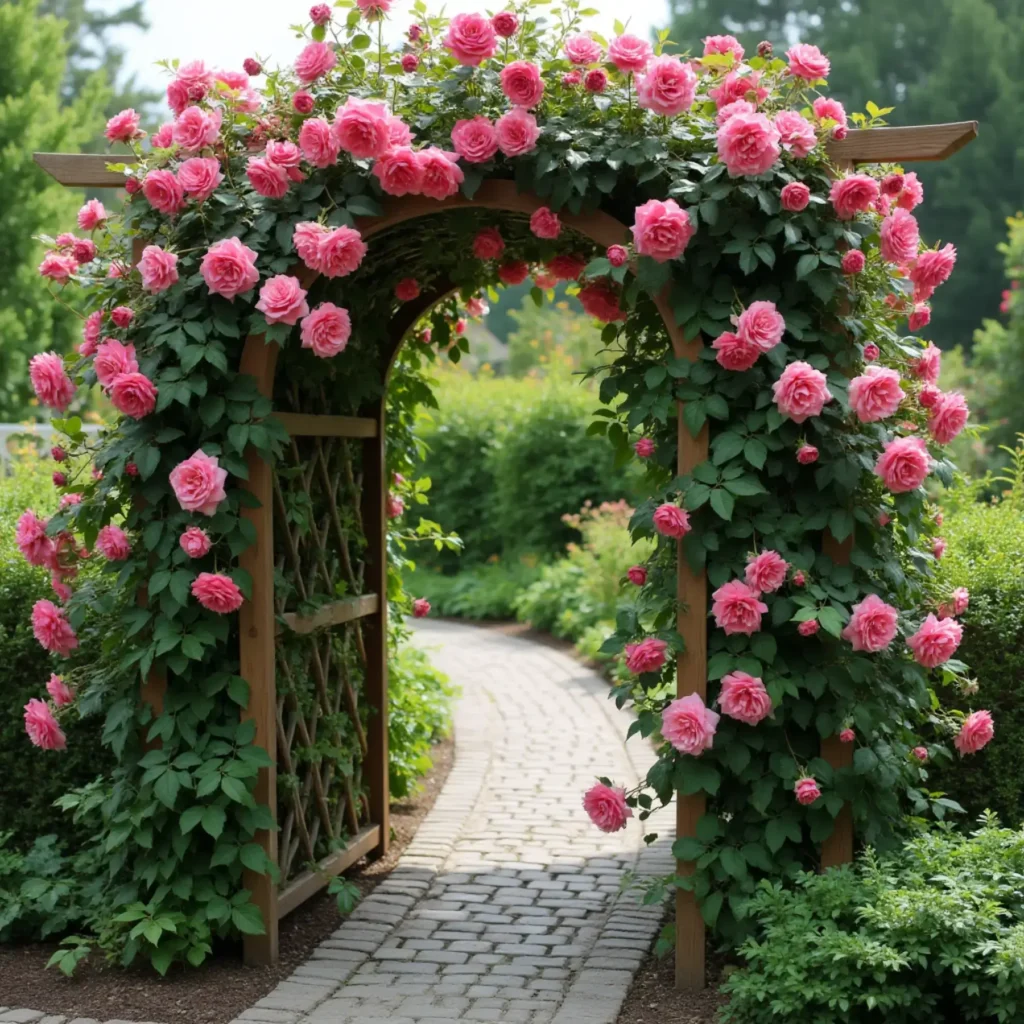
- Selecting a Trellis : Choose sturdy structures to support the weight of climbing roses as they grow.
- Training Roses : Gently tie branches to the trellis or wall using soft ties, guiding them to spread horizontally for more blooms.
- Ideal Varieties: Zephirine Drouhin is a thornless option for ease of care, while Golden Showers offers vibrant yellow flowers.
7. Designing a Large Rose Garden
With a spacious yard, the possibilities are endless. You can create a formal rose garden with symmetrical rows or go for a more naturalistic design with sprawling clusters.
- Add Features : Enhance the ambiance by incorporating pathways, birdbaths, or garden benches.
- Planting by Color : Group roses by complementary colors for a cohesive look. For example, pair red and white roses for a classic design.
- Layering : Use tall shrub roses in the back and shorter varieties in the front to create depth.
8. Caring for Roses Throughout the Seasons
To maintain healthy and blooming roses, seasonal care is crucial.
- Spring : Prune dead or damaged canes, apply balanced fertilizers, and mulch around plants to retain moisture.
- Summer : Focus on watering and pest control. Deadhead spent blooms to encourage new flowers.
- Fall : Reduce feeding to prepare roses for dormancy. Apply compost to enrich the soil.
- Winter : Protect roses from frost by mulching heavily or wrapping them with burlap.
- Spring : Prune dead or damaged canes, apply balanced fertilizers, and mulch around plants to retain moisture.
- Summer : Focus on watering and pest control. Deadhead spent blooms to encourage new flowers.
- Fall : Reduce feeding to prepare roses for dormancy. Apply compost to enrich the soil.
- Winter : Protect roses from frost by mulching heavily or wrapping them with burlap.
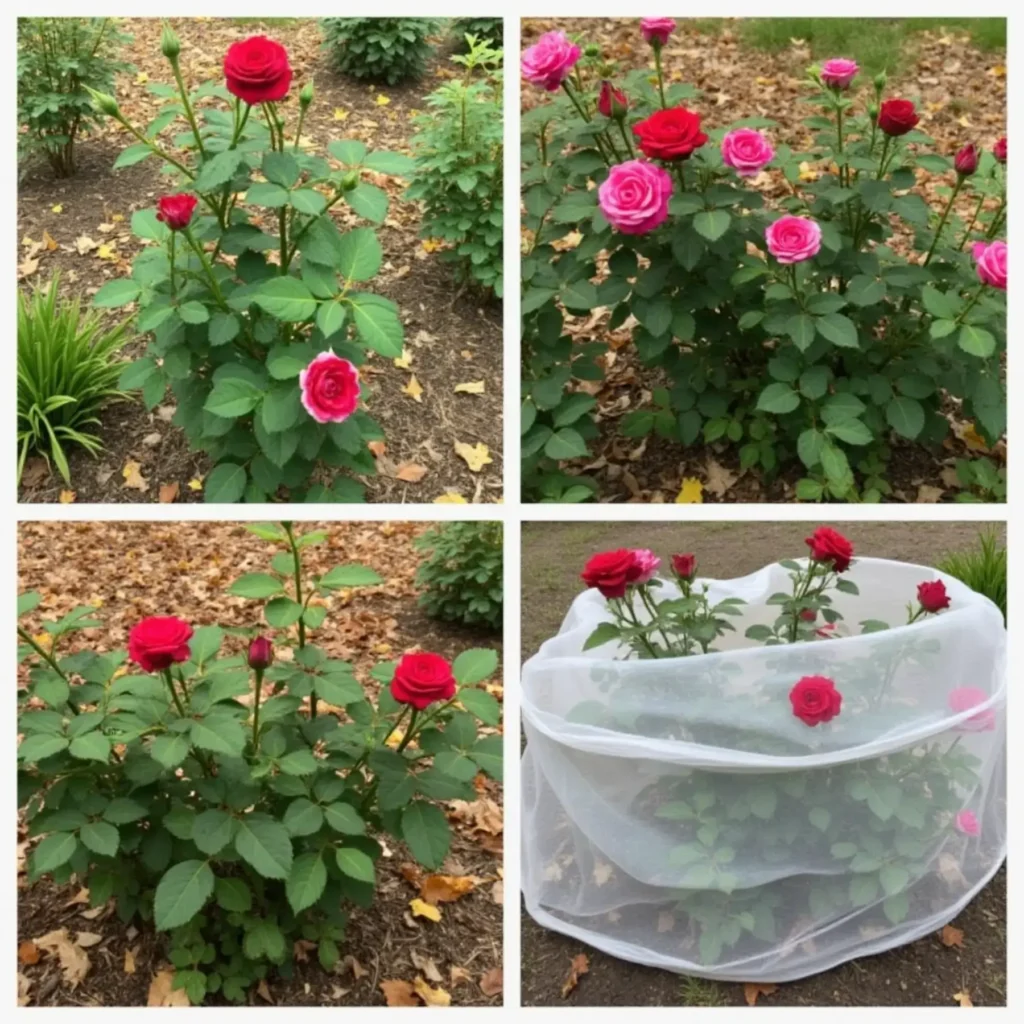
9. Common Rose Challenges and Solutions
Even with proper care, roses can face issues like pests and diseases.
- Aphids : Spray plants with a mix of water and dish soap to deter these pesky insects.
- Black Spot : Remove affected leaves and treat plants with a fungicide.
- Powdery Mildew : Ensure good air circulation and use sulfur-based treatments.
Conclusion
A rose garden isn’t just a collection of flowers it’s a source of pride, beauty, and relaxation. By tailoring your approach to your available space, you can enjoy the magic of roses in any setting, from a small balcony to a sprawling backyard. With the tips shared in this guide, you’re now equipped to begin your rose gardening journey.
FAQs about Rose Gardening
What’s the best time to plant roses ?
Spring or early fall is ideal for planting roses, as temperatures are moderate.
Can roses grow in partial shade ?
While roses prefer full sun, some varieties like Zephirine Drouhin tolerate partial shade.
How often should I fertilize roses ?
Feed roses every 4–6 weeks during their growing season using a balanced rose fertilizer.
What’s the easiest way to propagate roses ?
Take cuttings in late summer and root them in moist soil or water to grow new plants.
Do roses require daily watering ?
No, deep watering 2–3 times per week is sufficient, depending on weather conditions.

